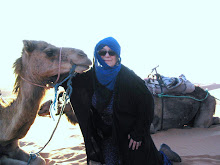The first book I read about the 'phenomenon' of 2012 was "2012 Return of Quetzalcoatl" by Daniel Pinchbeck (see the carousel). It was recommended to me by a friend who knew of my interest in the Maya.
This book is partly an account of Pinchbeck's own journey through drugs and relationships; and interesting information about various phenomena like crop circles. I have to say that it was through reading Pinchbeck's account of crop circles etc., that I finally came to 'believe' in them. He gave a very convincing argument and provided useful data.
According to Nassim Haramein, crop circles are evidence of contact. There is no way any human could have made them.
In the early 80s, I started a doctoral program in Mayan Studies at Tulane University in New Orleans. My interest in the Maya had begun in the late 60s when I studied Mesoamerican archeology as part of my B.A. degree in anthropology. Thus, I have been studying the Maya on and off over a period of 40 years.
While working on my doctorate, I leaned toward Mayan languages and hieroglyphs because of my M.A. in linguistics. As I learned more about the glyphs and texts, I was 'disappointed' to learn that those incredibly beautiful and complex inscriptions on temples were primarily political billboards. Accounts of the rulers' activities and justifications for their right to rule. Dull and boring.
I couldn't help but feel there was more to it than that, especially when I worked on the illustrations for a book written by one of my professors: "A Grammar of Mayan Hieroglyphs", by Victoria R. Bricker. As I learned to draw the glyphs myself and followed their lines, I began to sense that they could not be translated completely by using only the left brain. There was a whole other dimension to them. An element that could only be reached 'shamanically'. This is another thing that Pinchbeck writes about. He refers to Terrance McKenna. Around 1989, when I used to make pen and ink drawings of the Mayan equivalent of birthdates for people, McKenna's wife ordered one for the Mayan end date, which I made and sent to her. I wondered at the time why anyone would want that particular date. Duh
As an academic, I knew that the calendar would 'end' in 2012 and I also knew that it was the end of a cycle within a system of multiple cycles and so.... I thought it was unimportant.
I taught some courses on Mayan Hieroglyphs and others on Mayan culture in the early 90s and from time to time over the years revisited the material, thinking I 'should' try to finish my doctorate. Most recently, I was looking for some significance to the beginning date of the current cycle. In general, calendars chose a significant event to time the beginning of their calendar - for the west, it is the life of Christ, in Islam it was when the Hijra occurred—Islamic prophet Muhammad's emigration from Mecca to Medina.
Since the Mayan calendar begins in 3113 or 3114 B.C. (depending on the correlation you use), I was interested in discovering what that could relate to. The only thing I knew of was that this is approximately the date of the first dynasty in Egypt. In Mesoamerica, people were living at the tribal village level - no state government, no writing, no need for a calendar.
I guess it was Pinchbeck's book that shook me out of the narrow mindset I was stuck in. After that, I read John Major Jenkins "Maya Cosmogenesis 2012" and experienced the integration of the left and right parts of my brain. Since Jenkins has worked outside of academe, he was free to think 'outside the box'. The academic environment definitely is a box. That's why I had to leave it. I couldn't get what I wanted there. It was job training for a job I did not want.
What struck me the most about Jenkins' work is that he 'discovered' that the calendar was designed with the end date in mind. They discovered an event that would occur on the end date, then worked backwards. The evidence he gives is truly amazing! My academically-trained mind was fully satisfied with his evidence because it came from all those people I had been studying. Some of whom were my professors - all of whom I knew or had read myself. It clicked in.
I went to the Shift by the Bay conference in San Francisco last Halloween and that was it. Everything came into focus. From time to time I have wondered why I got hooked on the Maya the first time I heard about them, and why I went to all the time and expense to study them as I have. I am beginning to know why. The BIG AHA!
Thursday, March 5, 2009
Subscribe to:
Post Comments (Atom)









No comments:
Post a Comment